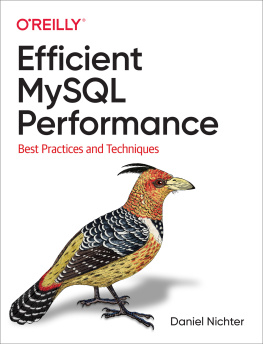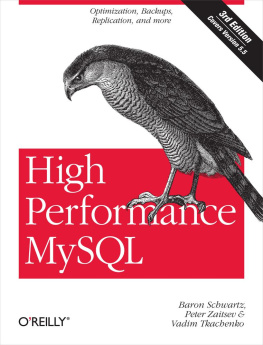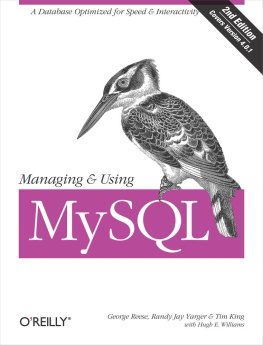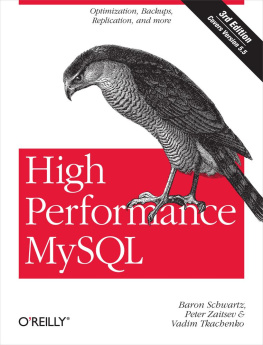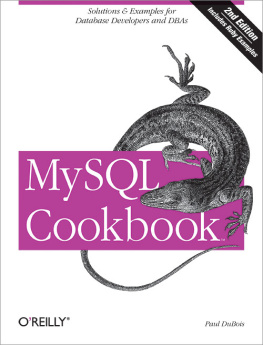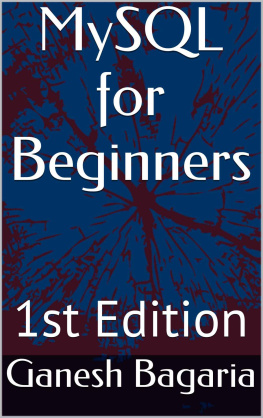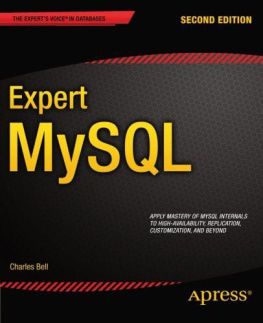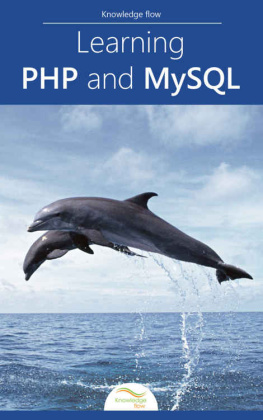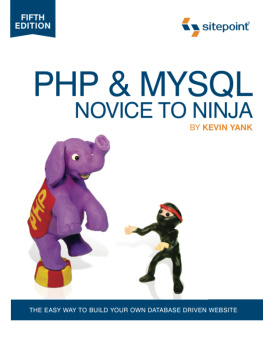A Note for Early Release Readers
With Early Release ebooks, you get books in their earliest formthe authors raw and unedited content as they writeso you can take advantage of these technologies long before the official release of these titles.
This will be the Preface of the final book.
If you have comments about how we might improve the content and/or examples in this book, or if you notice missing material within this chapter, please reach out to the ccollins@oreilly.com.
A gap in MySQL literature exists between basic MySQL knowledge and advanced MySQL performance.There are several books about the former, and one book about the latter: High Performance MySQL, also published by OReilly.This is the first and only book to bridge the gap.
The gap exists because MySQL is complex, and its difficult to teach performance without addressing that complexitythe proverbial elephant in the room.But engineers using (not managing) MySQL should not need to become MySQL experts to achieve remarkable MySQL performance.To bridge the gap, this book is unapologetically efficientpay no attention to the elephant; its friendly.
Efficient MySQL performance means focus: learning and applying only the best practices and techniques that directly effect remarkable MySQL performance.That focus dramatically narrows the scope of MySQL complexity and allows me to show you a much simpler and faster path through the vast and complex field of MySQL performance.The journey begins with the title and first sentence of : performance is query response time.From there, we move fast through indexes, data, access patterns, and a lot more.
On a scale of one to fivewhere one is an introduction for anyone, and five is a deep dive for aspiring expertsthis book ranges from three to four: deep, but far from the bottom.I presume that youre an experienced engineer who has basic knowledge and experience with a relational database (MySQL or otherwise), so I do not explain SQL or database fundamentals.I presume that youre an accomplished programmer who is responsible for one or more application that uses MySQL, so I continually reference the application and trust that you know the details of your application.I also presume that youre familiar with computers in general, so I talk freely about hardware, software, networks, and so forth.
Since this book focuses on MySQL performance for engineers using MySQL, not managing it, a few references to MySQL configuration are made when necessary but not explained.For help configuring MySQL, ask a DBA where you work.If you dont have a DBA, hire a MySQL consultant: there are many great consults with affordable contract options.And you can learn by reading the MySQL Reference Manual.The MySQL manual is superb, and experts use it all the time, so youre in good company.
Conventions Used in This Book
The following typographical conventions are used in this book:
ItalicIndicates new terms, URLs, email addresses, filenames, and file extensions.
Constant widthUsed for program listings, as well as within paragraphs to refer to program elements such as variable or function names, databases, data types, environment variables, statements, and keywords.
Constant width boldShows commands or other text that should be typed literally by the user.
Constant width italicShows text that should be replaced with user-supplied values or by values determined by context.
Tip
This element signifies a tip or suggestion.
Note
This element signifies a general note.
Warning
This element indicates a warning or caution.
Using Code Examples
Supplemental material (code examples, exercises, etc.) is available for download at https://github.com/oreillymedia/title_title.
If you have a technical question or a problem using the code examples, please send email to .
This book is here to help you get your job done. In general, if example code is offered with this book, you may use it in your programs and documentation. You do not need to contact us for permission unless youre reproducing a significant portion of the code. For example, writing a program that uses several chunks of code from this book does not require permission. Selling or distributing examples from OReilly books does require permission. Answering a question by citing this book and quoting example code does not require permission. Incorporating a significant amount of example code from this book into your products documentation does require permission.
We appreciate, but generally do not require, attribution. An attribution usually includes the title, author, publisher, and ISBN. For example: Book Title by Some Author (OReilly). Copyright 2012 Some Copyright Holder, 978-0-596-xxxx-x.
If you feel your use of code examples falls outside fair use or the permission given above, feel free to contact us at .
OReilly Online Learning
Note
For more than 40 years, OReilly Media has provided technology and business training, knowledge, and insight to help companies succeed.
Our unique network of experts and innovators share their knowledge and expertise through books, articles, and our online learning platform. OReillys online learning platform gives you on-demand access to live training courses, in-depth learning paths, interactive coding environments, and a vast collection of text and video from OReilly and 200+ other publishers. For more information, visit


